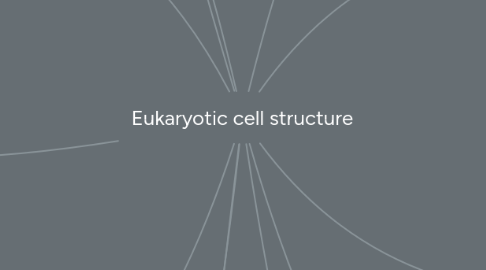
1. Eukaryotic Features
1.1. Distinct nucleus
1.2. membrane-bound organelles
2. Vacuole
2.1. In plant cells
2.2. Structure
2.2.1. Fluid-filled sac
2.2.2. Single membrane
2.2.3. solution of sugar, amino acids, pigment etc.
2.3. Function
2.3.1. Makes plant cells turgid
2.3.2. Temporary food store
2.3.3. pigment -> colour petal
2.3.3.1. attracts pollinator
3. Cell wall
3.1. In plant cells
3.1.1. made of cellulose
3.1.1.1. H bonds -> microfibril
3.1.1.2. Provides rigidity & strength
3.1.1.3. Prevents bursting
3.2. In algae
3.2.1. Cellulose/glycoprotein
3.3. In fungi
3.3.1. Chitin, glycan, glycoprotein
3.4. In bacteria
3.4.1. Murein
4. Chloroplast
4.1. 2nd largest organelle (Plant cells)
4.2. Structure & Function
4.2.1. Chloroplast membrane
4.2.2. Grana: Stacked thylakoid
4.2.2.1. Contain chlorophyll (absorbs light)
4.2.2.2. Large surface area
4.2.2.3. 1st stage of photosynthesis
4.2.3. Stroma
4.2.3.1. Contain enzymes for synthesis of sugar = 2nd stage of photosynthesis
4.2.3.2. Contain DNA & ribosomes to make proteins for photosynthesis
5. Ribosome
5.1. Smallest organelle
5.2. Structure
5.2.1. rRNA
5.2.1.1. Joins amino acids in correct order
5.2.2. enzyme
5.2.2.1. Makes peptide bonds
5.3. 2 types
5.3.1. 80s in eukaryotic cells (cytoplasm)
5.3.2. 70s in prokaryotic cells, mitochondria, chloroplasts
6. Plasma membrane
6.1. Phospholipid bilayer
6.2. Controls passage of substances
7. Golgi body & vesicles
7.1. Function = packages and transports proteins
7.1.1. Modifies protein (adding carbohydrates)
7.1.2. Produces vesicles for exocytosis
7.1.3. Transport, modify & store lipids
7.2. Structure
7.2.1. Stacks of membrane-bound sac (cristernae)
7.2.2. With small hollows = vesicles
7.3. In secretory cells
7.3.1. A lot of Golgi body
7.3.2. E.g. goblet cells which secrete mucus
8. Nucleus
8.1. Structure
8.1.1. Nucleolus
8.1.1.1. Makes rRNA &assembles ribosomes
8.1.2. Chromatin
8.1.2.1. DNA
8.1.3. Nuclear envelope
8.1.3.1. double membrane
8.1.4. Pore
8.1.4.1. allows passage of mRNA
8.2. Function
8.2.1. Contains DNA ->codes for mRNA -> makes proteins
8.2.2. Makes rRNA and ribosomes
8.3. Largest Organelle
9. Mitochondria
9.1. 3rd largest in plant cell, 2nd in animal cell
9.2. Structure
9.2.1. double membrane
9.2.2. Cristae (inner membrane)
9.2.2.1. large surface area for attachment of enzymes
9.2.3. Matrix
9.2.3.1. Contains proteins, lipids, ribosomes, DNA
9.2.3.2. Can make protein e.g. ATP synthase, enzymes
9.3. Function
9.3.1. Site of aerobic respiration
9.3.1.1. uses glucose; makes ATP
9.4. A lot of mitochondria required
9.4.1. In cells requiring a lot of ATP
9.4.2. e.g. epithelial cells for active transport
9.4.3. Muscle cells for muscle contraction -> movement
10. Endoplasmic Reticulum
10.1. Stacks of membrane-bound sac (cristernae)
10.2. Rough ER
10.2.1. With ribosomes
10.2.1.1. Large surface area for attachment of ribosomes
10.2.2. Function = Makes ribosomes
10.3. Smooth ER
10.3.1. Without ribosomes
10.3.2. Function
10.3.2.1. Makes carbohydrates and lipids
10.3.2.2. Contains enzymes for detoxification (breaking harmful substances)
10.4. Cells that make & store proteins, lipids, carbohydrates
10.4.1. Have a lot of ER
10.4.2. E.g. liver cells, epithelial cells
11. Lysosome
11.1. A vesicle containing hydrolytic enzymes
11.2. Function
11.2.1. Hydrolyse materials ingested by phagocytes
11.2.2. Release enzymes by exocytosis
11.2.3. Digests old/surplus organelles so useful chemicals can be used
11.2.4. Break down cells after the death of the cells = autolysis
